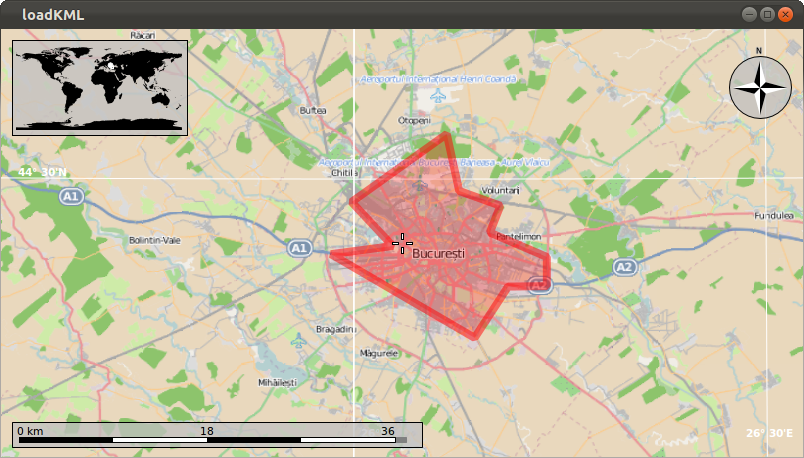Marble/Runners/LoadingKML: Difference between revisions
No edit summary |
No edit summary |
||
| Line 34: | Line 34: | ||
return 1; | return 1; | ||
} | } | ||
MarbleWidget *mapWidget = new MarbleWidget(); | MarbleWidget *mapWidget = new MarbleWidget(); | ||
mapWidget->setMapThemeId("earth/openstreetmap/openstreetmap.dgml"); | mapWidget->setMapThemeId("earth/openstreetmap/openstreetmap.dgml"); | ||
Revision as of 22:56, 23 September 2012
| Tutorial Series | Marble C++ Tutorial |
| Previous | Tutorial 8 - Reverse Geocoding |
| What's Next | Tutorial 10 - Opening .kml, .gpx, ... files |
| Further Reading | n/a |
Loading KML files into a Marble Widget
Marble uses so-called runners to calculate routes, do reverse geocoding, parse files and search for placemarks (cities, addresses, points of interest, ...). This tutorial shows how to use the MarbleRunnerManager class to open a .kml (or .gpx, .osm, ...) file and display it into the Marble Widget.
#include <QtCore/QDebug>
#include <QtCore/QFileInfo>
#include <QtGui/QApplication>
#include <marble/MarbleWidget.h>
#include <marble/MarbleModel.h>
#include <marble/MarbleRunnerManager.h>
using namespace Marble;
int main(int argc, char** argv)
{
QApplication app(argc,argv);
QFileInfo inputFile( app.arguments().last() );
if ( app.arguments().size() < 2 || !inputFile.exists() ) {
qWarning() << "Usage: " << app.arguments().first() << "file.kml";
return 1;
}
MarbleWidget *mapWidget = new MarbleWidget();
mapWidget->setMapThemeId("earth/openstreetmap/openstreetmap.dgml");
mapWidget->centerOn( GeoDataCoordinates( 26.0783, 44.4671, 0, GeoDataCoordinates::Degree ) );
mapWidget->zoomView( 2200 );
mapWidget->model()->addGeoDataFile( inputFile.absoluteFilePath() );
mapWidget->show();
return app.exec();
}
Copy and paste the code above into a text editor. Then save it as my_marble.cpp and compile it by entering the following command on the command line:
g++ -I /usr/include/qt4/ -o my_marble my_marble.cpp -lmarblewidget -lQtGui -lQtCore
If things go fine, execute ./my_marble some-file.kml and you get a Marble Widget which displays your KML file. For example, download and unpack Bucharest.kml (a LinearRing representing Bucharest's city boundaries), place it in the same folder as your my_marble.cpp file and run ./my_marble bucharest.kml. The result should be similar to this:



